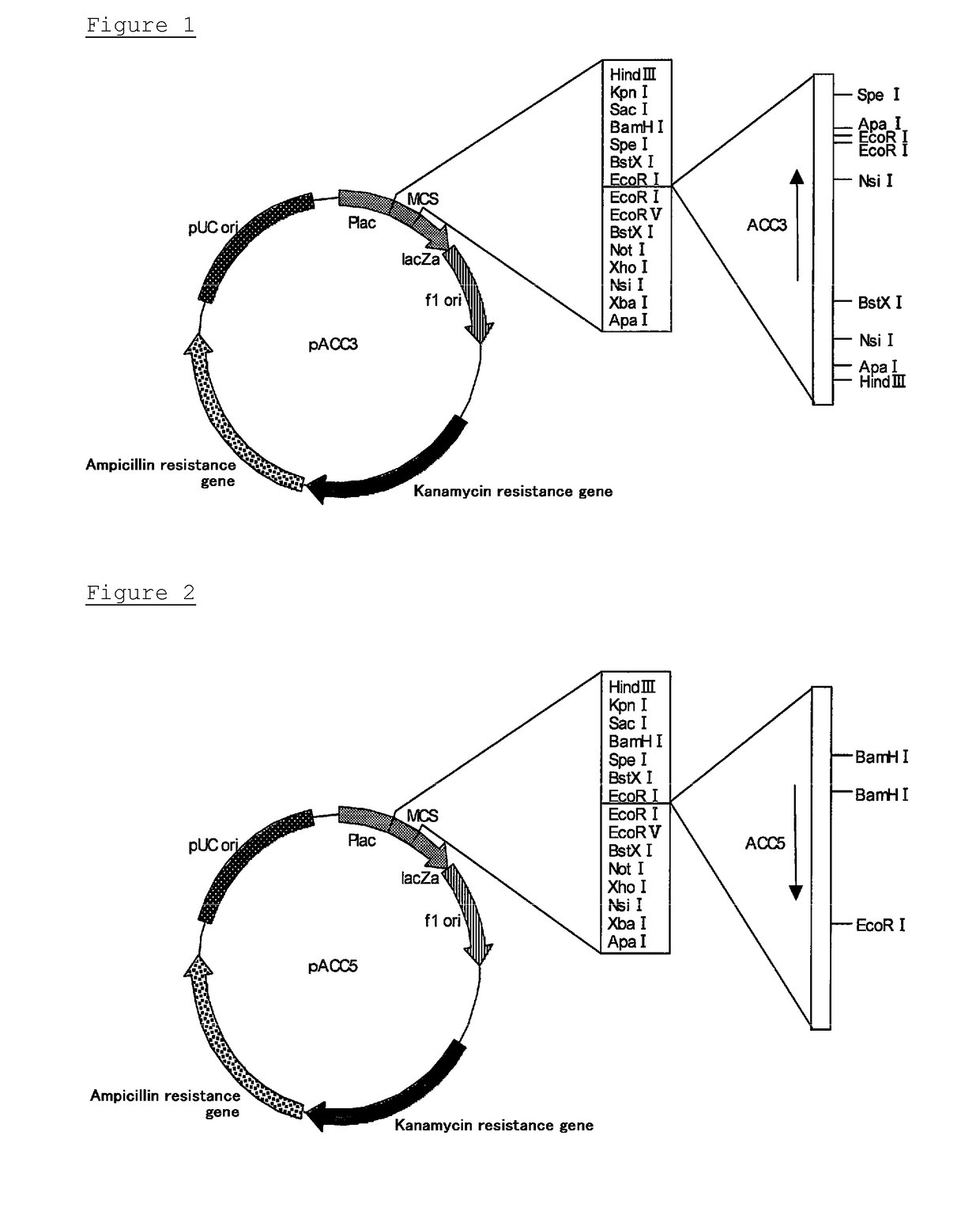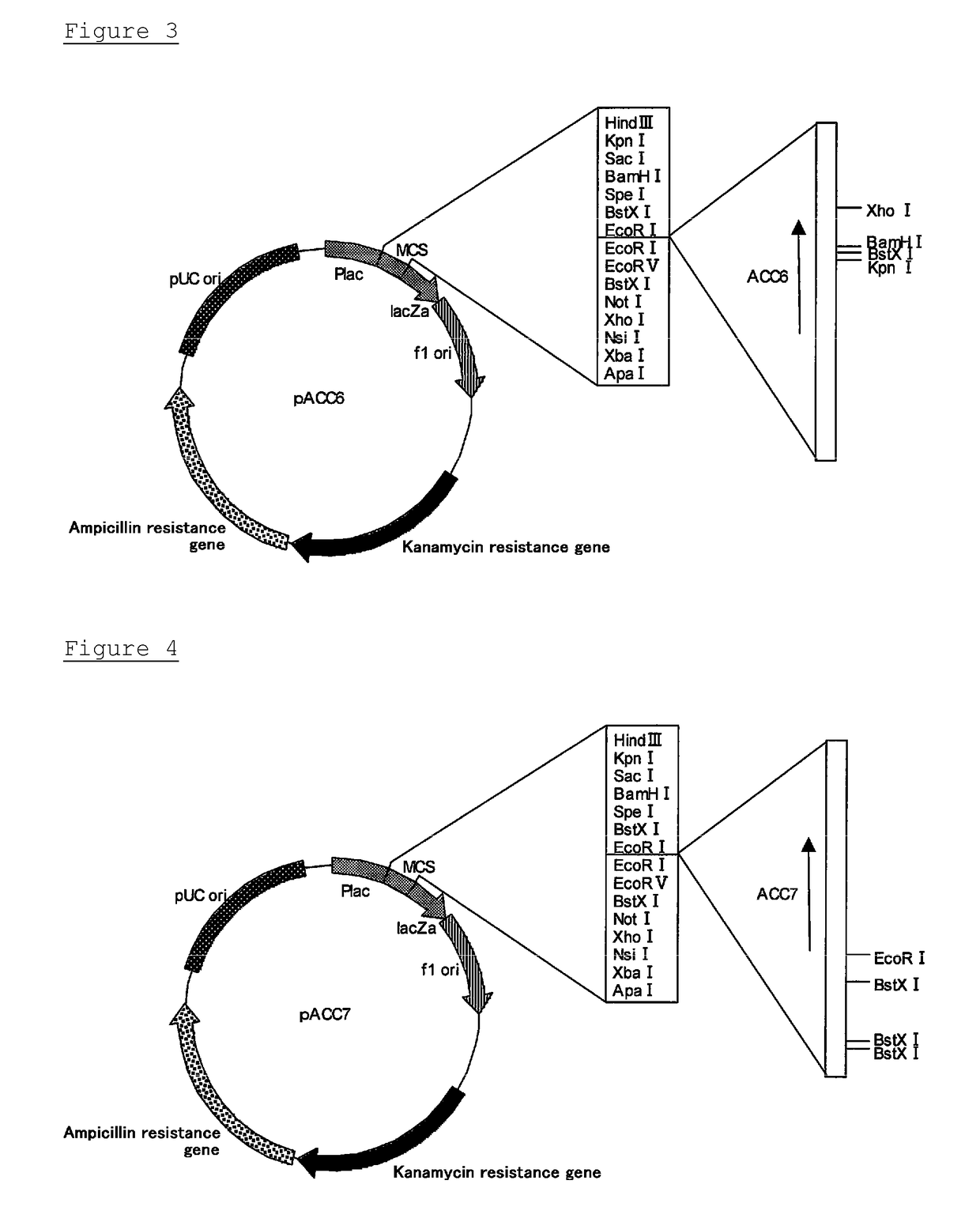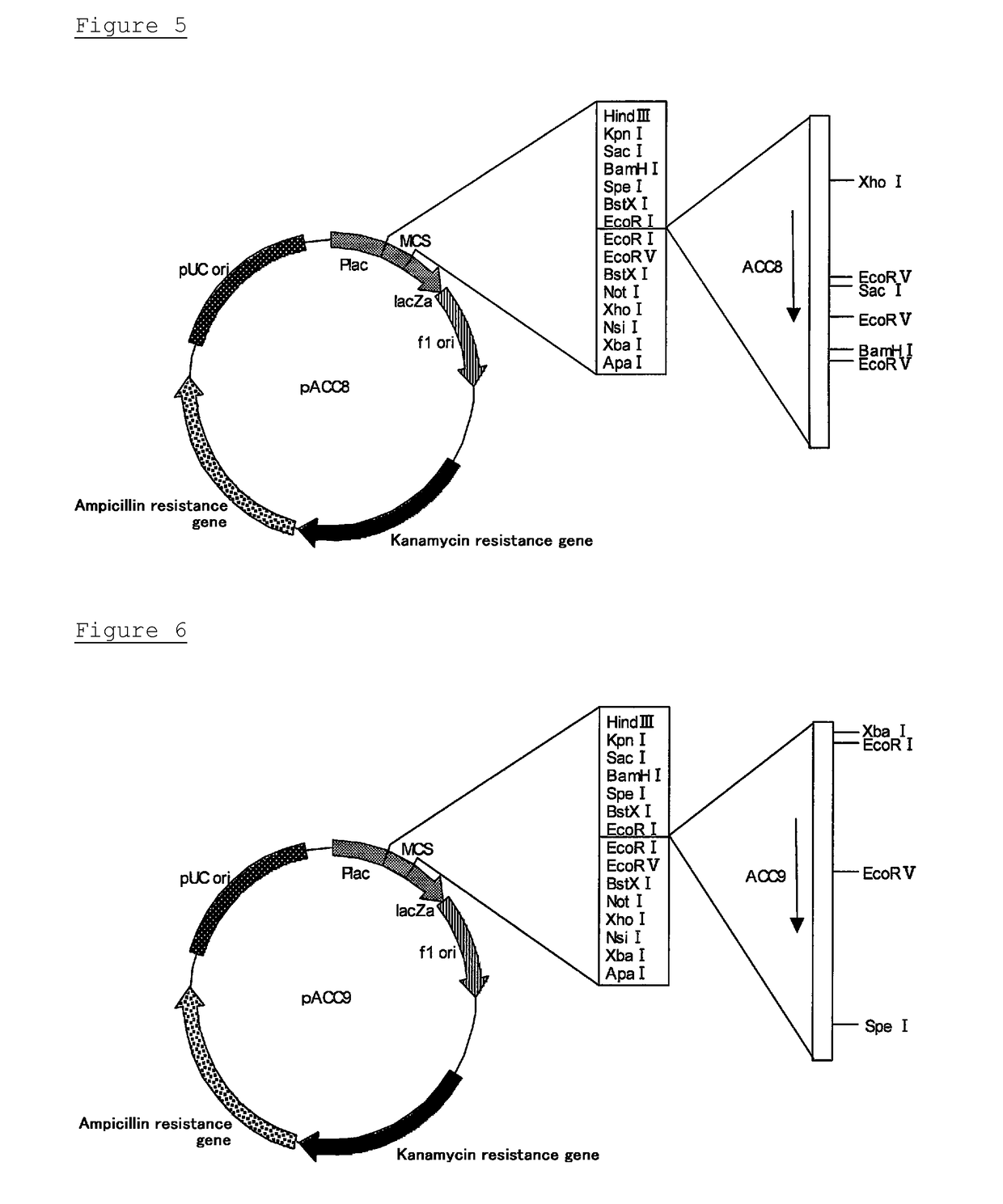Novel cellulase gene
a cellulase and gene technology, applied in the field of cellulases, can solve the problems of suppressing expression by gene disruption or enhanced expression by gene introduction, and cannot be carried out with respect to the other cellulases, and achieves the effects of low cost, efficient production, and efficient production of specific endoglucanases
- Summary
- Abstract
- Description
- Claims
- Application Information
AI Technical Summary
Benefits of technology
Problems solved by technology
Method used
Image
Examples
example 1
f ACC3 Gene
(1-1) Isolation of Genomic DNA
[0074]Acremonium cellulolyticus ACCP-5-1 was cultivated in an (s) medium (2% bouillon, 0.5% yeast extract, and 2% glucose) at 32° C. for 2 days, and centrifuged to collect mycelia. Genomic DNA was isolated from the obtained mycelia in accordance with the method of Horiuchi et al. (H. Horiuchi et al., J. Bacteriol., 170, 272-278, (1988)).
(1-2) Cloning of ACC3 Gene Fragment
[0075]The following primers were prepared based on the sequences of known endoglucanases which were classified into Glycoside Hydrolase family 5.
ACC3-F:(SEQ ID NO: 19)GGGCGTCTGTRTTYGARTGTACC3-R:(SEQ ID NO: 20)AAAATGTAGTCTCCCCACCA
[0076]PCR was carried out using ACC3-F and ACC3-R as primers and genomic DNA as a template, and using LA Taq polymerase (Takara Bio). The PCR was carried out by repeating a cycle consisting of a reaction at 94° C. for 30 seconds, annealing for 30 seconds, and a reaction at 72° C. for 1 minute 40 times. The annealing temperature was lowered stepwisely ...
example 2
f ACC5 Gene
[0086](2-1) Isolation of Genomic DNA and mRNA and Preparation of cDNA
[0087]Genomic DNA of Acremonium cellulolyticus ACCP-5-1 was isolated in accordance with the method described in Example 1-1. cDNA of Acremonium cellulolyticus ACCP-5-1 was prepared in accordance with the method described in Example 1-4.
(2-2) Cloning of ACC5 Gene Fragment
[0088]The following primers were prepared based on the N-terminal amino acid sequences of known endoglucanases which were classified into Glycoside Hydrolase family 7 and the poly A nucleotide sequence.
(SEQ ID NO: 27)ACC5-F: CAGCAGGCCCCCACCCCNGAYAAYYTNGC(SEQ ID NO: 28)ACC5-R: AATTCGCGGCCGCTAAAAAAAAA
[0089]PCR was carried out using ACC5-F and ACC5-R as primers and cDNA as a template, and using LA Taq polymerase (Takara Bio). The PCR was carried out by repeating a cycle consisting of a reaction at 94° C. for 30 seconds, annealing for 30 seconds, and a reaction at 72° C. for 1 minute 40 times. The annealing temperature was lowered stepwisely ...
example 3
f ACC6 Gene
(3-1) Isolation of Genomic DNA and Preparation of Genomic Library
[0098]Genomic DNA of Acremonium cellulolyticus ACCP-5-1 was isolated in accordance with the method described in Example 1-1. The isolated genomic DNA was partially digested with Sau3AI. The resulting product was ligated with BamHI arms of a phage vector dMBL3 cloning kit (Stratagene) using a ligation kit Ver. 2 (Takara Shuzo). The ligation mixture was subjected to ethanol precipitation, and the resulting precipitate was dissolved in a TE buffer. Phage particles were formed using the ligation mixture solution and a MaxPlax λ packaging kit (Epicenter Technologies), and Escherichia coli XL1-blue MRA(P2) was infected with the phage particles. A genomic DNA library of 1.1×104 phages was obtained by this method.
(3-2) Cloning of ACC6 Gene Fragment
[0099]The following primers were prepared based on the sequences of known endoglucanases which were classified into Glycoside Hydrolase family 5.
(SEQ ID NO: 35)ACC6-F: GTG...
PUM
 Login to View More
Login to View More Abstract
Description
Claims
Application Information
 Login to View More
Login to View More - R&D
- Intellectual Property
- Life Sciences
- Materials
- Tech Scout
- Unparalleled Data Quality
- Higher Quality Content
- 60% Fewer Hallucinations
Browse by: Latest US Patents, China's latest patents, Technical Efficacy Thesaurus, Application Domain, Technology Topic, Popular Technical Reports.
© 2025 PatSnap. All rights reserved.Legal|Privacy policy|Modern Slavery Act Transparency Statement|Sitemap|About US| Contact US: help@patsnap.com



